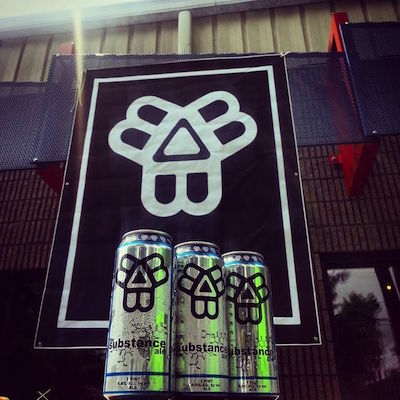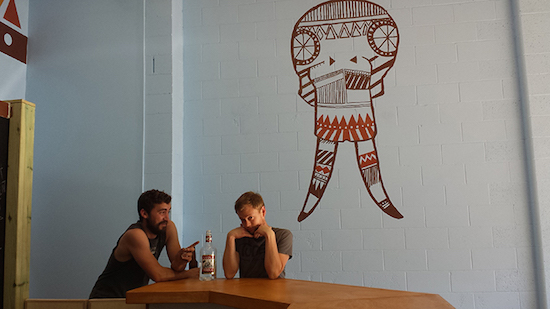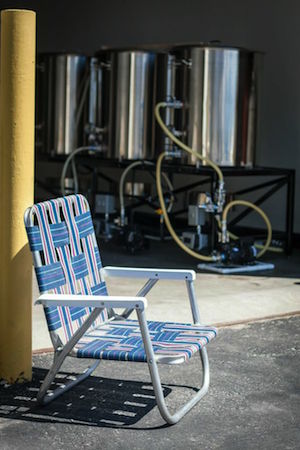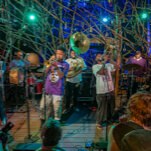Nano Breweries: The Art (and Economics) of Brewing at Tiny Scales
Photo via Bissell BrothersFrom a consumer’s perspective, it’s tempting to romanticize art. Unless we bother to find out for ourselves (and truly, how many of us do?), we often remain blind to the bulk of the creative slog that exists between genesis and the finished product. It’s a problem of perception; we see something sprung full-formed from the head of the creator, and little of the nitty-gritty. A 10-line poem was likely pared down from 50, and from countless rewrites at that. Dance numbers are painstakingly built, one shoulder shrug or about-face at a time. Musicians are always scrapping complete songs in pursuit of the one that they’re actually trying, hoping, to write.
Brewing, too, sits at something of a meeting point between art and craft, and it’s not overwrought or overzealous to say so. Just like other artists, brewers operate within a preexisting framework, within a matrix of tradition and reference, and are compelled to create something that pays lip service to that history, yet also reflects their own personality and preferences. Often, that dichotomy is a difficult one to navigate; pushing boundaries is well and good, but brewing is a business, and the lights need to be kept on. Art, then—in more ways than one—requires illumination.
It would be disingenuous to say, or to think, that the situation is any different for nano breweries. It’s a loosely defined term, so suffice to say that the designation describes any brewery that 1) makes very, very little beer (say, between one and three barrels, or roughly ninety gallons at a time), and/or 2) boasts an ultra-limited distribution footprint. For these breweries, their owners, and employees, their diminutive commercial stature amplifies such difficult choices, as well as the ensuing fallout and boon.
This is a long-winded way of saying that, sometimes, it’s good to have a plan.
“I think [brewers] are beginning to understand that it’s not enough to just brew good beer anymore,” says Bissell Brothers co-founder and business director Peter Bissell. “I’ll say it: making great beer is not enough. It’s just a given at this point. If you want to enter the market, great beer has to be a given.”
Indeed, good beer is where it starts, even if there’s not much of it to go around at first. Bissell Brothers, for example, churned out roughly 1200 barrels of beer in 2014, their first full year of production. Since adding more tanks and taking over a third unit in the industrial park they currently occupy—along with fellow breweries Foundation and Austin Street—across the street from Allagash in Portland, Maine, Bissell is on track to produce 3200 barrels in 2015. That’s more than double last year’s, but still miniscule. For comparison, Ballast Point Brewing’s new additional facility alone will produce about 350,000 barrels this year.
Austin Street Brewing operates on an even smaller scale, one that required a bit of ingenuity and elbow grease to kickstart. “We’re brewing on a 1-bbl Blichmann (a manufacturer of fairly high-end homebrewing setups) system, and we have four two-bbl fermenters,” says co-founder and brewer Jake Austin. “But a lot of that stuff is custom made by us and some friends in the industry. We’ve taken over the unit next to us in the industrial park, and hopefully by September or October, we’ll be on our 10-bbl system.”
I visited Austin Street in late 2014, and can attest to the DIY elements: the conical fermentation tanks are custom-made, and several brewing vessels had enjoyed a previous life as sixtel kegs, now with their tops knocked off. Still, the brewery is producing a surprisingly wide range of top-quality beers, even given their limited capacity…or perhaps because of it.
Joel Mahaffey of Foundation Brewing has a similar outlook. “One of the advantages is that you’re not limited. Everything is on a small scale, so you’re not locked into one style of brewing,” he says. “I think that’s always going to be a struggle for us, actually, to make sure that we don’t wander too far off the path, because we really love trying different things. As a brewery, that’s something we really love doing in the tasting room—doing smaller batches of stuff. That’s one thing that keeps our customers coming back. They love our regular beers of course, but they like to see what we’ve been up to in the last few weeks, and the tasting room is a good venue for that.”

Bissell Brothers
Indeed, it’s wise to have a niche, even if your muse is taken with a perpetual case of creative wanderlust. Foundation, for example—though they just made their canning debut with Epiphany, a mega-juicy IPA—specializes in saisons. Bissell Brothers is making a name for themselves with a variety of hop-forward beers like Substance and Swish. Austin Street, somewhat ironically, has one of the more varied portfolios (which includes a few pale ales a milk stout, a barleywine, a IIPA, a saison, and a brown ale, among others) but is quickly gaining particular notoriety for its “Brett Loves Hops” series, in which the brewers experiment with different combinations of brettnomyces strains and hop varieties. Batch 1 of the series featured a combination of Nelson Sauvin, Galaxy, and Simcoe, while Batch 2 solely utilized Nelson Sauvin. Bier 2 Cellar, an unofficial offshoot of the project released in conjunction with Portland’s fantastic Bier Cellar bottle shop, highlighted Azacca hops. That beer is soft, tropical, and musky, with hints of lime and brie.
-

-

-

-

-

-

-

-

-

-

-

-

-

-

-

-

-

-

-

-

-

-

-

-

-

-

-

-

-

-

-

-

-

-

-

-

-

-

-

-










































